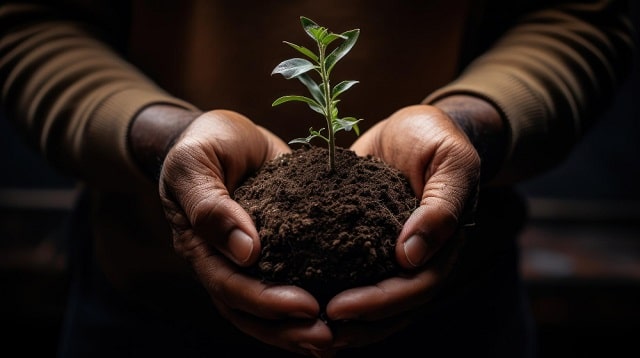Cannabis cultivation is an art that combines skill, patience, and the right resources. Among these, the choice of soil plays a pivotal role in determining the health, yield, and potency of your cannabis plants. Soil is not just a medium to hold plants upright; it is a dynamic ecosystem that affects the growth at every stage.
In this comprehensive guide, you will delve into why selecting the right soil is crucial for growing cannabis and how it can impact the outcome of your cultivation efforts.
1. Nutrient Supply and Balance
Soil is the primary source of nutrients for cannabis plants. The best soil for cannabis to properly grow in should have a balanced mix of nitrogen, phosphorus, and potassium, along with a host of micronutrients essential for plant growth, which needs to be considered.
Organic soils enriched with compost or natural fertilizers are often preferred as they provide a sustained release of nutrients. This gradual feeding supports steady growth without the risk of nutrient burn, common with synthetic fertilizers.
2. pH Levels and Its Impact
The pH level of the soil significantly affects the plant’s ability to absorb nutrients, which is important for them to grow properly. Cannabis thrives in slightly acidic soils with a pH range of 6.0 to 7.0.
Soils outside this range can lead to nutrient lockout, where the plants cannot uptake necessary nutrients, leading to deficiencies. Regularly testing and adjusting the soil’s pH is vital for maintaining optimal growth conditions.
3. Water Retention and Drainage
Proper water retention is crucial for maintaining healthy cannabis plants, as well. The soil should be able to hold enough moisture to keep the roots hydrated while also providing good drainage to prevent waterlogging issues.
Overly dense soils can suffocate roots and lead to root rot, while overly sandy soils may not retain sufficient moisture for the plants to thrive. A mix of peat, perlite, and vermiculite is often recommended for the ideal balance of water retention and drainage.
4. Soil Texture and Aeration
The texture of the soil determines its aeration properties. Good aeration is essential for the development of healthy root systems. Cannabis plants need oxygen at the root level for optimal growth to take place.
Loamy soil, which is a mix of sand, silt, and clay, usually offers the best texture for cannabis cultivation. It provides enough space for air to reach the roots and allows the roots to grow freely and absorb nutrients effectively.
5. Microbial Activity and Organic Matter
Soil rich in organic matter supports a thriving ecosystem of beneficial microbes that can assist the plants’ growth rate. These microorganisms break down organic matter into nutrients that the plant can absorb.
They also help protect the roots from pathogens and improve overall soil structure. Adding compost or worm castings can enhance the microbial life in the soil, contributing to the overall health of cannabis plants.
6. Importance of Choosing the Right Soil for Different Stages
Cannabis plants have different soil requirements at different stages of their lifecycle that you need to be aware of. Seedlings and young plants prefer a more fine and nutrient-rich soil, while mature plants require a denser and nutrient-balanced medium.
Tailoring the soil composition for each stage of growth ensures that the plants receive the right support for their development.
7. The Role of Soil in Flavor and Potency
The soil directly influences the flavor and potency of cannabis. Plants grown in high-quality soil tend to produce buds with better flavor profiles and higher cannabinoid concentrations.
The best soil for cannabis is one that not only supports healthy growth but also enhances the natural characteristics of the strain.
8. Environmental Considerations and Sustainability
Choosing organic and sustainable soils is not only beneficial for the plants but also for the environment. Organic soils reduce the reliance on chemical fertilizers and pesticides, leading to a more eco-friendly cultivation process.
Additionally, sustainable practices like composting and using locally sourced soil amendments reduce the carbon footprint of cannabis cultivation.
Insights and Takeaways
The importance of choosing the right soil when growing cannabis cannot be overstated. The right soil provides a balanced nutrient supply, maintains proper pH levels, ensures optimal water retention and drainage, offers the right texture for aeration, supports beneficial microbial activity, and contributes to the overall environmental sustainability of cannabis cultivation.
By understanding and prioritizing these factors, cultivators can significantly improve the health, yield, and quality of their cannabis plants. Remember, the foundation of a successful cannabis grow starts beneath the surface – in the quality and composition of the soil you choose.


